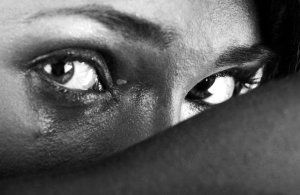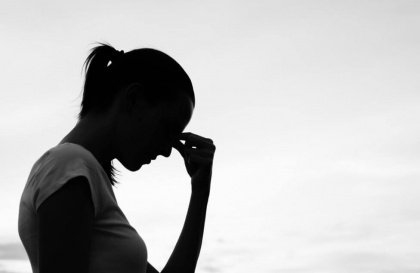Depression: Pain that Becomes a Shadow

Sometimes we identify tears as the expression of pain, but many times deep pain can’t find a way out, can’t find a way to be expressed and communicated with others.
Some people even suppress their tears because it’s embarrassing for them to expose their feelings publicly. They fear being judged and stigmatized and for their suffering to be analyzed. But we should be aware that crying isn’t the only way in which sadness can be expressed.
What is depression?
Depression is a very complex issue. It requires a comprehensive therapeutic approach, which requires examination and intervention from diverse fields of knowledge. Scientists link depression to a drop in the amount of reinforcers, or positively reinforced behavior. In other words, the individual stops feeling pleasure for the things they do.
It may be due to a change in the actions themselves and their content. They may simply no longer seem as enjoyable to the individuals (a change in their company, location, etc.). Even though they still do them, internally the person doesn’t process the actions in the same way. This is often due to some psychological event that has taken place.
Or simply, the individual is so sad that he doesn’t even perform the activities anymore. This is, without a doubt, one of the most dangerous ways depression can manifest itself. Since we’re not feeling motivated by our surroundings, we do nothing.
Therefore, we also don’t obtain any kind of feedback, positive or negative. We don’t know how to take care of ourselves. We harm ourselves constantly.
How do we stop the pain?
Once we find ourselves in this kind of situation, seeking professional help can be a significant step in our future development. The first step is to establish a correct diagnosis. But it’s of no use to know which thoughts are harming us or are forcing themselves to be avoided. We need to establish a treatment based on facts.
Many patients associate depression with spending all day in bed crying. This is actually misguided and can make us not pay attention to other behaviors. These may also indicate that we’re going through a very delicate moment.

Describing depression
- Emotional symptoms. Sadness is depression’s quintessential mood symptom. And in severe cases, the patient may even deny this feeling of sadness. But there are other symptoms regarding our mood: irritability, feelings of emptiness, and nervousness.
- Motivational and behavioral symptoms. Apathy, indifference, anhedonia. There can even be a disappearance of motor responses, gestures, and difficulty moving that isn’t due to any other pathology. In the most severe cases, people can even reach what’s referred to as a “depressive stupor“ (mutism and motor paralysis).
- Cognitive symptoms. Alterations occur in our memory, attention span and our ability to concentrate. Our knowledge and judgment about ourselves are also altered: excessive guilt, loss of self-esteem and contempt towards oneself.
- Physical symptoms. Insomnia, excessive fatigue, reduced or increased appetite, and decreased sexual activity occur.
- Social symptoms. An alteration in our interpersonal relationships is produced. And if alienation takes place, it leads to a worse prognosis.
Is it curable?
Depression is at times called “the sickness of the soul,” but it’s a disease that requires treatment and can be severe. There are a great variety of treatments available, including cognitive behavioral therapy, interpersonal therapy, or behavioral therapy.
The important thing is to understand that even if we don’t cry (we might not even be able to), there are plenty of other symptoms we should watch out for.
Remember: hanging on and being strong can actually make us very weak. If you’re experiencing this, seeking help is a brave step to take.
This text is provided for informational purposes only and does not replace consultation with a professional. If in doubt, consult your specialist.








